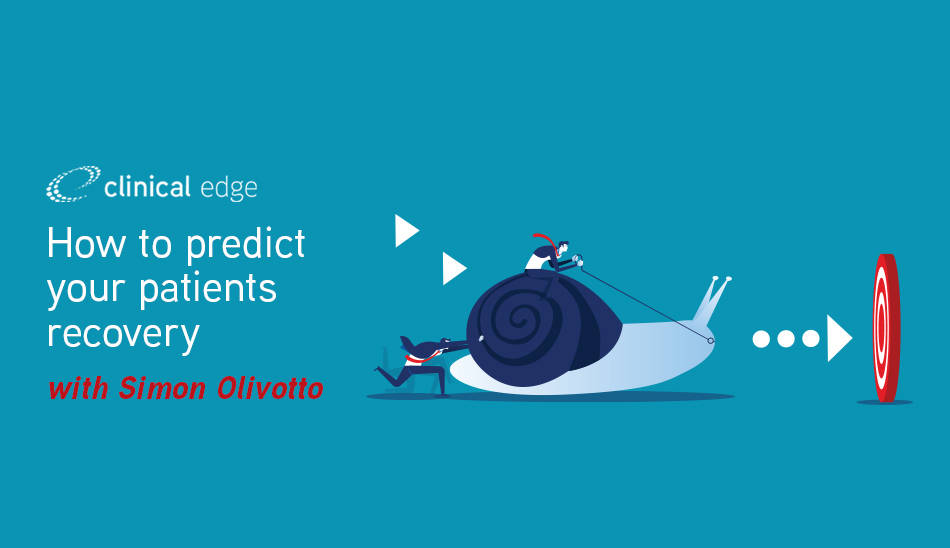
How long will your patients take to recover? Every patient wants to know if they’ll become painfree or be able to return to work, sport or activity, and how long it will take. Sometimes you can feel like you need a crystal ball to answer their questions. How can you accurately predict your patients prognosis and recovery timeframes?
This presentation will help you answer your patients when they ask you - “Do you think I’ll get better?” and “How long until I’m better?”.
You’ve likely treated at least one patient in the last couple of days or weeks that isn’t responding to treatment as well as you’d like. Despite our best efforts, not all patients will recover. How can you identify patients that are likely to have a poor outcome? How can you communicate this risk of poor recovery in an empathetic way, without negatively influencing your patients expectations and creating a poor outcome?
Other patients are likely to recover quickly with very little treatment. How can you identify these patients, avoid overtreating them and communicate this in a way that they still feel supported?
Now available - Clinical reasoning presentation 11: How to predict your patients recovery with Simon Olivotto
Improve your clinical accuracy in predicting your patients recovery, and how to best communicate this, with this presentation from Simon Olivotto (Musculoskeletal Specialist Physiotherapist). Simon uses practical patient examples to help you discover:
- What recovery really means to your patients. Is it complete resolution of symptoms, or restoring function despite ongoing pain?
- Evidence based timelines for expected recovery of different conditions.
- How to communicate prognosis to patients
- How recovery is impacted by
- Tissue healing timeframes for specific pathology & diagnoses, including tendon, bone, ligament, muscle, osteochondral, and neural pain and injury have different tissue healing times that impact recovery.
- Impairments in range of movement (ROM), load tolerance, motor control, strength or hypertrophy
- Loading and lifestyle considerations (Including sleep)
- Neurophysiological adaptations – pain sensitisation, peripheral and central mechanisms contributing to nociception
- Psychosocial factors - behavioural, cognitive and affective
- How to use these factors to give your patient an accurate estimate of their recovery timeframe.
- How to quickly and easily use clinical prediction rules and psychosocial risk stratification to guide your prognosis.
- Expected recovery times for patients with multifactorial contributions to pain, where a specific pathoanatomical diagnosis does not account for all symptoms eg non-specific low back pain (NSLBP)
- Recovery for patients with specific diagnoses, including lateral ankle ligament injuries, LBP with and without radicular features, neck pain and whiplash.
- How to identify and communicate with patients that are likely to require very little treatment to recover quickly.
- What to tell patients that are at risk of a poor outcome, without negatively influencing expectations and recovery
- How to use the principle of “Under promise and over deliver” with your patients.
CLICK HERE to improve your clinical reasoning with a free trial Clinical Edge membership
